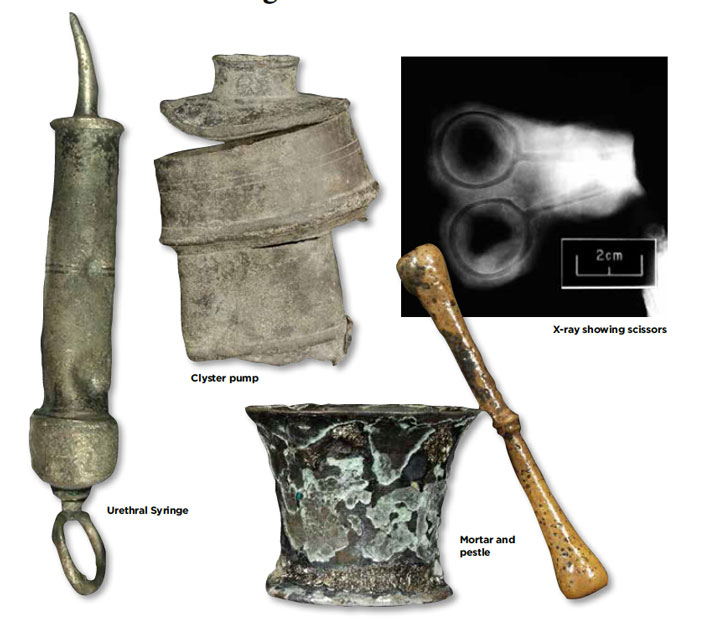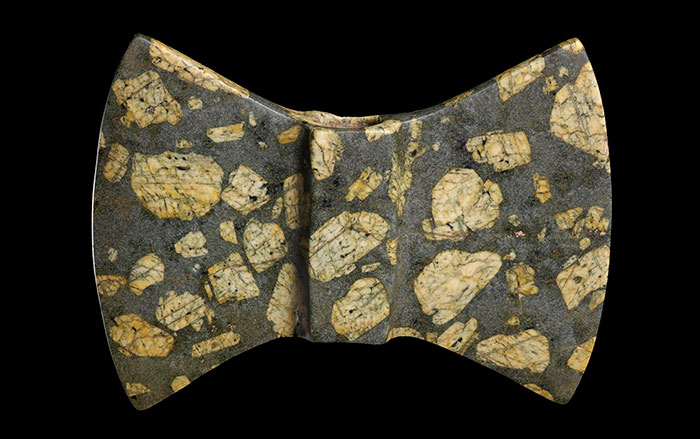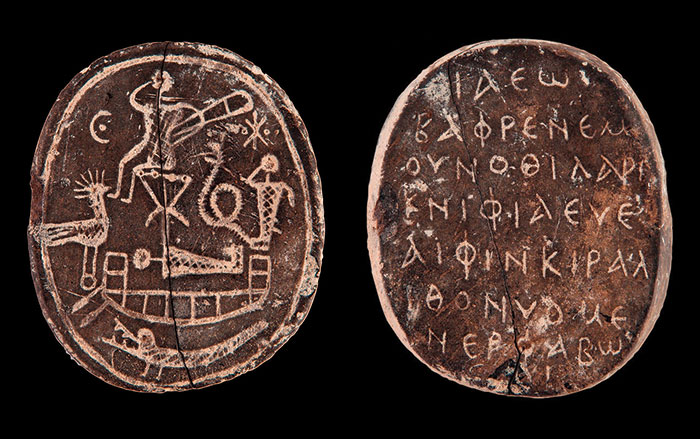
A urethral syringe, clyster pump, mortar and pestle, needle, and scissors found at the wreck site of Queen Anne’s Revenge off the North Carolina coast hint that medical care was commonplace on Blackbeard’s flagship, and that crew members likely suffered from a variety of unsavory conditions. Linda Carnes-McNaughton, archaeologist and long-time volunteer with the excavation project, presented the medical finds at the annual Society of Historical Archaeology meeting in January 2015. She associated artifacts from the shipwreck with period treatments for illnesses such as dysentery (or “bloody flux”), scurvy, and syphilis. Her discoveries are not for the squeamish. For syphilis, or the “great pox,” mercury was injected into the urethra. Dysentery, constipation, or fever called for an enema, or clyster, of chamomile, cork ash, tobacco, brandy, wine, or vinegar. The blend depended on the symptoms. The treatments would have been state of the art in Blackbeard’s heyday in 1717 and 1718.
For Sarah Watkins-Kenney, lab director and chief conservator for the Queen Anne’s Revenge project, Carnes-McNaughton’s research provides an additional dimension to the ship’s significance to researchers. “It demonstrates what can be learned from this assemblage of artifacts,” she says. “It will tell us more about seafaring life in the early eighteenth century.”












